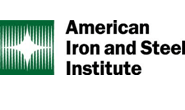Steel Markets

Construction Adds 16,000 Jobs, Unfilled Positions Remain High: AGC
Written by David Schollaert
September 8, 2022
Construction employment increased by 16,000 jobs in August, though the sector’s unemployment rate was up at 3.9%, the Associated General Contractors of America (AGC) reported.
Contractors were eager to hire more employees last month though they were stymied by a dearth of qualified workers. More than 90% of contractors are having a hard time finding workers in August, likely limiting the number of jobs added in the sector last month, AGC said.
“Nonresidential construction activity is growing but contractors universally report difficulty hiring as many workers as they need,” said Ken Simonson, AGC’s chief economist. “With the industry unemployment rate hovering below 4%, finding qualified applicants is sure to remain a major challenge.”
Total construction employment climbed to 7,708,000 jobs in August as both residential and nonresidential construction firms added positions for the month.
Nonresidential firms added 4,300 employees – with 700 jobs added to general building contractors and 5,600 to nonresidential specialty trade contractors. Those additions were offset by a loss of 2,000 at heavy and civil engineering construction firms.
Employment in residential construction—homebuilders, multifamily general contractors, and residential specialty trade contractors—increased by 10,900 in August.
Compared to August 2021, the construction industry has added 311,000 jobs, an increase of 4.2%. The nonresidential sector added 191,600 of the total annual job gain, an increase of 4.4% year-on-year (YoY). Meanwhile, residential construction firms added 118,700 jobs YoY through August, a 4% rise.
The unemployment rate among jobseekers with construction experience fell from 4.6% to 3.9% YoY in August, Simonson noted.
He said the low unemployment rate is consistent with AGC’s recent survey, which found that 93% of responding firms had open positions. Of those firms, 91% report having a hard time filling hourly craft positions.
Association officials noted that one of the main causes of workforce shortages is due to fewer people being exposed to the opportunities available in the industry and a lack of basic, essential skills.
Nearly 80% of contractors report there are few workers available that meet the minimum qualification standards, including being able to pass a drug test – an insurance requirement.
“Public officials need to boost funding for construction-focused training programs to expose more workers to the opportunities that exist in the industry,” Simonson added. “The industry has the work; it just needs the workers.”
By David Schollaert, David@SteelMarketUpdate.com

David Schollaert
Read more from David SchollaertLatest in Steel Markets

AISI: Raw steel production bounces back
Domestic mill production rebounded last week, according to the latest production figures released by the American Iron and Steel Institute (AISI). Production had been historically strong over the summer months before softening in early October.

US sets Section 232 tariffs on trucks and buses
Medium- and heavy-duty trucks (MHDV) and buses imported to the US will start being charged Section 232 tariffs beginning Nov. 1.

Hot-rolled sources say demand continues to dwindle, prices feel arbitrary
Genuine demand, they stated, will return when the market feels stable again.

FabArc Steel Supply completes projects in Mississippi, Georgia
FabArc Steel Supply announced this week the completion of two large-scale projects in Georgia and Mississippi.

Thin demand keeps plate prices hovering at lowest levels since February
Participants in the domestic plate market say spot prices appear to have hit the floor, and they continue to linger there. They say demand for steel remains thin, with plate products no exception.
